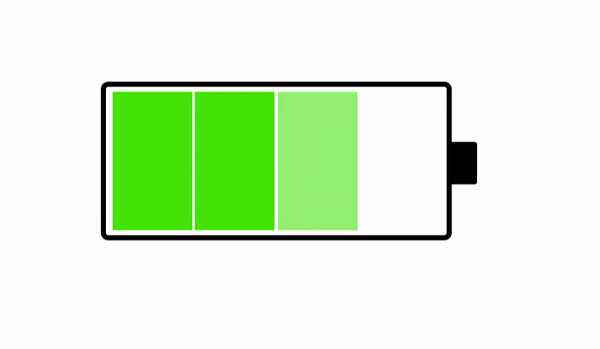1. Getting Access
Lobin's Data Dashboard 2024, visualizing supply and demand in the lodging market Korea, is provided based upon Microsoft Power BI , and will become accessible once obtaining a permission pursuant to the following process:
- Click 'sign up' at Lodging Data Dashboard page.
- Fill in and submit the sign-up form.
- After submitting the form, pay the access fee as guided in the form
- Accept the invitation delivered via email, and login to use the service
2. Data Elements
#
Tab
Element
Content
1
Highlight
Shape Map
Occupancy, ADR, RevPAR for the selected year by region
Summary Indicators
The number of establishments, rooms, rooms available, rooms occupied, guests, guests POR, occupancy, ADR, RevPAR for the selected year, region and type
2
Establishments
Bar Chart
Historical trends in the number of establishments for the selected region and type
Line Chart
Historical trends of the average age of establishments in the selected region and type
Donut Chart (L)
Establishments mix by region for the selected year and type
Donut Chart (R)
Establishments mix by type for the selected year and region
3
Opening/Closing
Bar Chart
Historical trends of openings and closings for the selected region and type
Dot Chart
Historical trends of net change of establishments for the selected region and type
Donut Chart (L)
Openings mix by type for the selected year and region
Donut Chart (R)
Closings mix by type for the selected year and region
4
Rooms
Bar Chart
Historical trends in the number of rooms for the selected region and type
Line Chart
Historical trends of the average room count for the selected region and type
Donut Chart (L)
Rooms mix by region for the selected year and type
Donut Chart (R)
Rooms mix by type for the selected year and region
5
Rooms Available
Bar Chart
Historical trends of rooms available for the selected region and type
Line Chart
Historical trends of the average operating days for the selected region and type
Donut Chart (L)
Rooms available mix by region for the selected year and type
Donut Chart (R)
Rooms available mix by type for the selected year and region
6
Guests
Stacked Bar Chart
Historical trends in the number of guests for the selected region and type (segmented by origion and purpose)
Line Chart
Historical trends of average guests POR for the selected region and type
Donut Chart (L)
Guests mix by origin and purpose for the selected year, region and type
Bar Chart (R)
The average guests POR by type for the selected year and region
7
Rooms Occupied
Stacked Bar Chart
Historical trends of rooms occupied for the selected region and type (segmented by origion and purpose)
Line Chart
Historical trends of occupancy for the selected region and type
Donut Chart (L)
Rooms occupied mix by origin and purpose for the selected year, region and type
Bar Chart (R)
Occupancy by type for the selected year and region
8
Room Revenue
Stacked Bar Chart
Historical trends of room revenue for the selected region and type (segmented by origion and purpose)
Line Chart
Historical trends of ADR for the selected region and type
Donut Chart (L)
Room revenue mix by origin and purpose for the selected year, region and type
Bar Chart (R)
The average ADR by type for the selected year and region
9
Positioning
Bar Chart
Historical trends of ADR for the selected region and type
Line Chart
Historical trends of RevPAR for the selected region and type
Bubble Chart (L)
Occupancy and ADR by region for the selected year and type (bubble size: RevPAR)
Bubble Chart (R)
Occupancy and ADR by type for the selected year and region (bubble size: RevPAR)
3. Using the Data
4. Building on Data
As uncertainty in the broader social environment continues to grow, the lodging market is also experiencing heightened uncertainty. Additionally, as the boundaries between different types of lodging establishments – which once operated in separate market segments – become increasingly blurred, the competitive landscape is becoming significantly unpredictable.
The primary goal of the Data Dashboard 2024 is to accurately analyze investment and management risks across lodging markets of Korea, enabling users to quickly identify effective strategies to respond to these risks.
- In general, cash flow in the lodging industry is known to be highly volatile. This volatility stems from the fact that imbalances between supply and demand are not resolved due to differing time horizons.
- Specifically, supply and demand follow different time intervals in terms of short-term seasonality and long-term cyclicality. While supply operates on a lifecycle based on the building’s economic lifespan of 40 years, demand is driven by daily consumption units.
- Short-term volatility in supply can be measured by the average number of operating days, while long-term volatility can be assessed through the average age of establishments. On the demand side, short-term volatility can be evaluated by monthly fluctuations in occupancy, and long-term volatility by year-over-year trends in occupancy changes.
- Economies of scale are one of the traditional ways lodging businesses manage cash flow volatility, as they help reduce the relative burden of fixed costs.
- However, due to the challenges of capital sourcing, it is rare for a single property to achieve economies of scale. Instead, markets are typically dominated by small-scale lodging establishments, which face fewer capital sourcing constraints.
- The proportion of small-scale lodging establishments in a given region can be measured by the average room count - fewer room count generally indicates a larger share of small-scale establishments.
- When the share of small-scale establishments is large, the rate of business openings and closings tends to rise, leading to instability in supply. This rate can be estimated using the average number of operating days - shorter average operating days typically suggest higher turnover rates.

